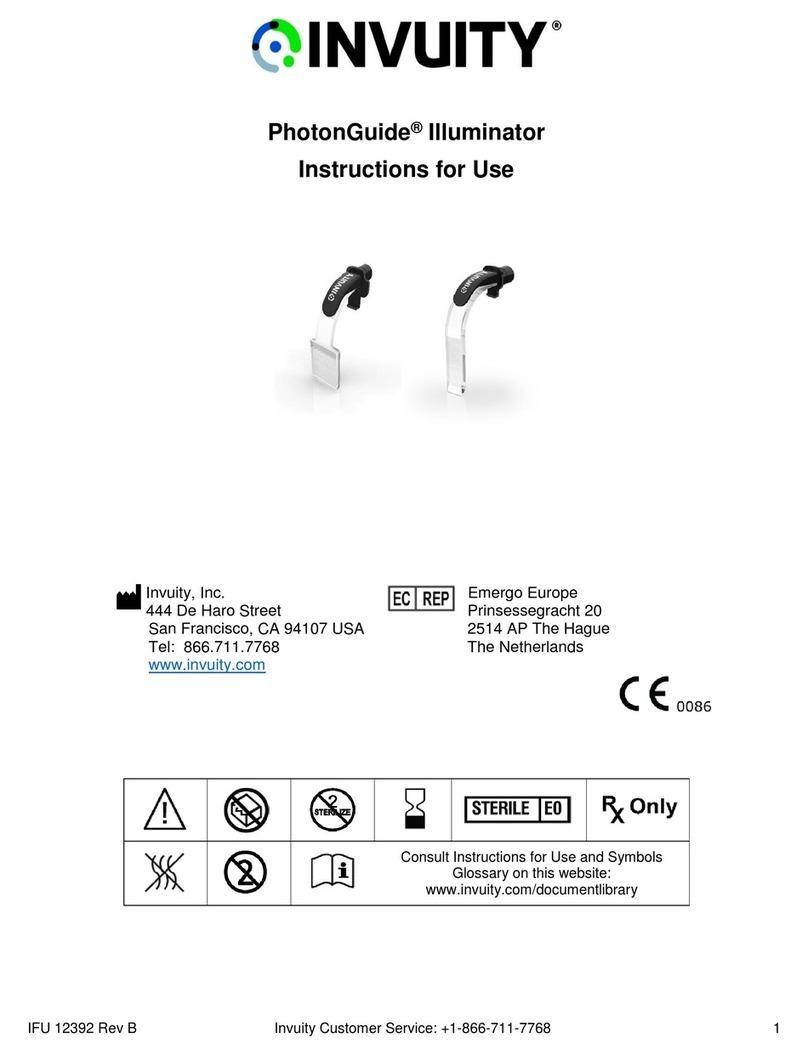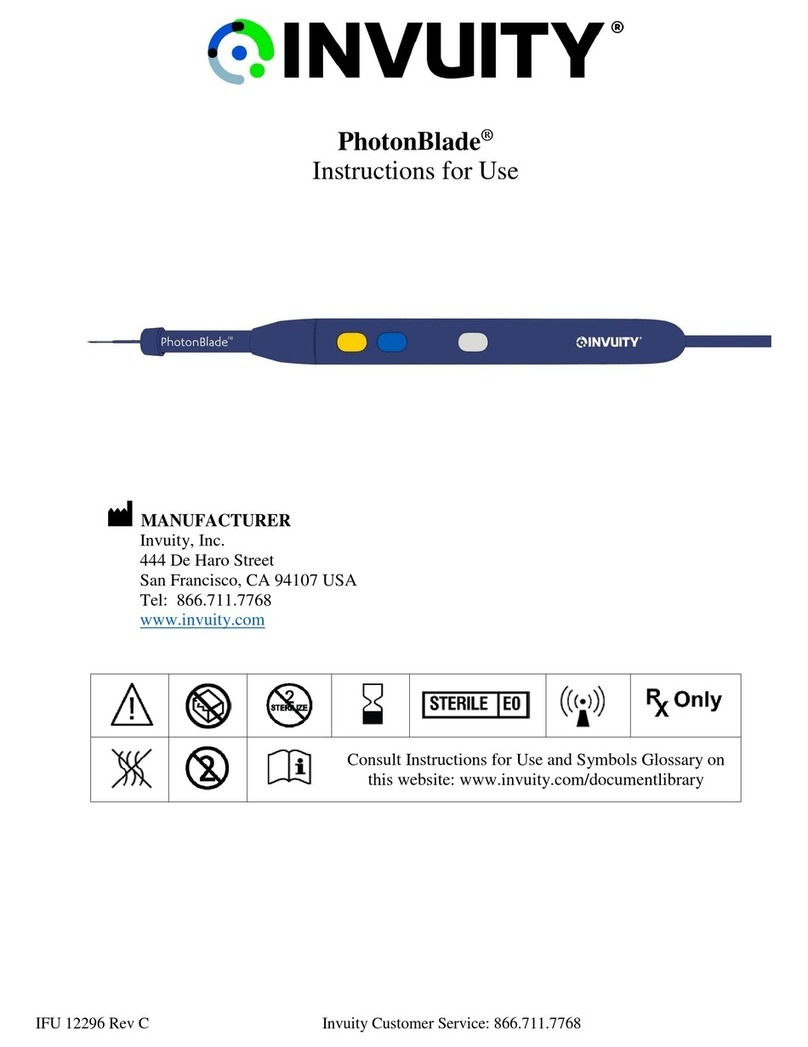
IFU 14466 Rev A 8
Nettoyage et stérilisation
Avertissements/
Précautions
•Nettoyer le plateau de stérilisation comme indiqué avant la première utilisation. Utiliser les
méthodes de nettoyage qui sont indiquées dans ce mode d’emploi. D’autres méthodes de
nettoyage risquent d’empêcher la stérilisation correcte du matériel.
•Ne pas utiliser la stérilisation Sterrad® ou d’autres procédés de stérilisation contenant du chlore
(eau de Javel) ou des solutions enzymatiques.
•Il est recommandé d’utiliser le plateau de stérilisation Invuity approprié pour aider à protéger les
câbles à fibre optique ou écarteurs Invuity contre les dommages pendant le transport, la
décontamination, la stérilisation et le stockage.
•Ne pas traiter d’instruments de différents métaux pendant la stérilisation, car une oxydation par
électrolyse peut se produire.
Nettoyage
1. Utiliser une solution enzymatique ou un détergent à pH neutre selon le protocole de l’hôpital
pour le nettoyage avant trempage. Porter une attention particulière aux instructions pour une
dilution, une température et un temps de trempage corrects.
2. Frotter soigneusement l’ensemble du plateau de stérilisation Invuity à l’aide d’une brosse douce
et d’un détergent à pH neutre (7,0-8,5). Un produit de nettoyage alcalin (non dilué, jusqu’à
pH 11) est acceptable mais non préférable. Les produits de nettoyage alcalin peuvent produire
des dommages esthétiques ou réduire la durée de vie du produit. Le plateau de stérilisation
Invuity peut être immergé lors du lavage. Veiller particulièrement à bien nettoyer et à éliminer
tous les débris des trous d’aération.
Remarque : Ne pas utiliser de brosse à poils rigides ou de type métallique pour nettoyer le
plateau. Éviter tout contact avec d’autres instruments ou objets métalliques qui pourraient
bosseler, tordre, gratter ou autrement endommager la surface du plateau de stérilisation.
3. Rincer le plateau de stérilisation pour éliminer les débris résiduels et les agents nettoyants.
Qualité de l’eau
•Utiliser une eau de qualité appropriée pour chaque stade du processus de nettoyage. Les
résidus minéraux d’une eau calcaire peuvent tacher le matériel et/ou empêcher un nettoyage et
une décontamination efficaces.
•Utiliser de l’eau courante pour chasser, laver et rincer le matériel. L’eau courante est celle qui
provient directement du robinet.
•Utiliser de l’eau potable pour diluer les produits de nettoyage. L’eau potable est celle qui a été
traitée et livrée de manière à répondre aux exigences de la US Environmental Protection
Agency (EPA) des États-Unis ou locales en tant qu’eau potable.
•Utiliser de l’eau critique pour le rinçage final du matériel avant la stérilisation. L’eau critique
est celle qui a été traitée de manière intensive généralement par un processus en plusieurs
étapes qui peut inclure un lit de carbone, un adoucisseur, une désionisation et une osmose
inverse ou une distillation pour garantir que les microorganismes et les matières inorganiques
et organiques sont éliminés de l’eau. Une filtration submicronique finale peut également faire
partie du processus de traitement.
MISE EN GARDE : Une mauvaise qualité de l’eau peut avoir un effet délétère sur la durée de
service des dispositifs médicaux. TOUJOURS observer les exigences relatives à la qualité de l’eau
de la norme TIR 34 de l’association pour l’avancement de l’instrumentation médicale (Association
for the Advancement of Medical Instrumentation, AAMI).
Pour le nettoyage manuel, de l’eau tiède avec une plage de températures optimale de 27 à 44 °C est
recommandée. La température de l’eau ne doit pas dépasser 60 °C et l’eau doit être tiède au toucher.
Désinfection
(en option)
Les processus de désinfection ne garantissent pas la marge de sécurité associée aux processus de
stérilisation. La désinfection est donc facultative.





























